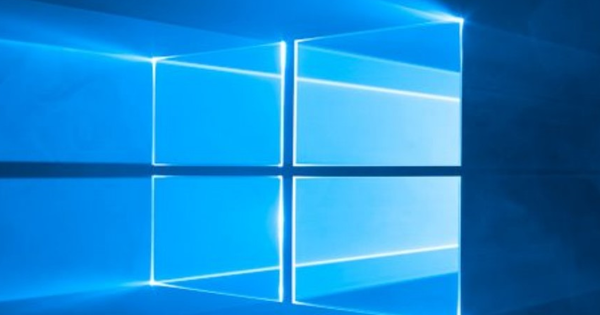Graphics cards and monitors now have countless connectivity options. But what is intended for what and what are the differences? And how do you connect a product with a completely different plug? We discuss these and other issues in this edition of Solved.
Out of sync
You might know it: a monitor that stays black, except for the vague 'out of sync' message and sometimes an RGB color pattern. This means that something goes wrong in the communication between the PC and the monitor. The monitor cannot display what the PC is requesting. This can be a (too high) resolution that is not supported, but also a refresh rate (refresh rate) that is too high, for example 85 Hz (hertz). This problem can be caused by incorrect drivers, problems in Windows or playing an old game. With CRT monitors, the refresh rate had to be as high as possible for a flicker-free image. With LCD monitors, that kite does not go up. A refresh rate of 60 Hz is sufficient for a stable image. Only for gamers who are used to a high number of fps (frames/images per second) a refresh rate of 75 or 85 Hz is desirable. The 'out of sync' problem can be solved by lowering the resolution or refresh rate (for example, to a safe setting like 1280 x 1024 at 60 Hz). You can do this by pressing F8 during boot and then choosing to boot in Windows safe mode. Alternatively, you can also temporarily connect an old CRT monitor to change the setting. If this doesn't fix the problem, it's best to reinstall the graphics card and/or monitor driver.
Monitor connections
Modern monitors often have a whole range of connectivity options. Usually, in addition to a DVI port, they also offer a VGA port, which can connect the monitor to an older computer, or act as a display for another system (you can switch the source via a toggle button). Some monitors also have a component input, which allows it to display images from an external source. On the latest models we often find an HDMI or DisplayPort connection. Less obvious, but very handy, is a built-in USB hub that the slightly more expensive monitor often has. When you connect a USB cable from your PC to your monitor, you have a number of extra USB ports at your disposal, so you can quickly connect a device without having to crawl behind the PC.

Color Calibration
Monitors do not display colors exactly the same. Too dark, too light, oversaturated, too red, too yellow, anything is possible. Place two monitors side by side and compare a photo, or better yet a color chart with different shades of gray (from white to black) and a series of color areas. You will notice a clear difference. So it can happen that you think a photo looks perfect, but that others (who send you the photo, for example) criticize the brightness or a visible color cast. This is because digital devices have a limited color range and thus do not display exactly the same. This problem also occurs with printers and scanners. To solve this problem, we recommend calibrating your monitor, preferably with a color meter. A so-called ICC profile is then created, in which the color profile is stored. Other devices, such as PCs, monitors and printers, use the same color values based on this, so the image matches. Most monitor manufacturers already supply such an ICC profile as standard (on the CD with drivers). Because monitors lose some brightness over time, but also because the environment around them sometimes changes, it's a good idea to repeat the calibration every few months. Even if you use two monitors (or more), color calibration is a must. In that case, note that the cheapest color meters often only support one monitor.

A color meter allows you to optimally calibrate your monitor.
Old and new DVI ports
If you are considering buying a monitor with a resolution higher than 1920 x 1200 pixels, such as 2560 x 1600 pixels which is common with 30 inch monitors, check if your graphics card has a 'dual link' DVI port. The first generation of DVI ports had a limited bandwidth of 3.7 Gbps: too little to display a resolution higher than Full HD. A dual-link DVI connection has three additional contact points in the middle of the row, giving it twice the bandwidth. Duallink is standard on modern graphics cards that are not older than about 2.5 years.

DVI
On modern graphics cards we now find two DVI ports. On older cards, this is a DVI and a VGA port. If you want to connect a second monitor with a VGA port to a modern graphics card, you can use a converter (see the Converters section). When you have the choice between DVI and VGA, DVI is always preferred because the information is then transmitted completely digitally. With VGA, the signal is first translated to analog and then back to digital, causing a slight loss of quality.

HDMI
The HDMI standard is mainly used for TVs, but sometimes also for monitors. The main difference with DVI is that HDMI also carries audio signals and is compatible with HDCP (the copy protection of Blu-ray). The bandwidth of HDMI is also a lot larger (14.9 Gbps).

DisplayPort
DisplayPort is an alternative to the HDMI connection for computer equipment. The standard was created by a number of hardware manufacturers (including AMD/ATI, NVIDIA, Dell and HP) to avoid paying licensing fees for HDMI. Although the connector resembles an HDMI plug, it is not compatible. DisplayPort offers a bandwidth of 10.8 Gbps and, like HDMI, is compatible with HDCP as standard.

converters
DVI connections are currently the standard on PCs and laptops. Sometimes there are other ports, such as HDMI, DisplayPort or even the old VGA port. But there are also computers with a slightly smaller variant, such as mini-DVI and mini-DisplayPort that we see a lot on Macs. Whatever variant(s) you have, there is always a converter to connect it to another device. For example, there are converters from DVI to HDMI, DVI to VGA (and vice versa), and VGA/DVI to composite/S-VHS.

There is a converter for every connection type, such as this one from VGA to DVI.

